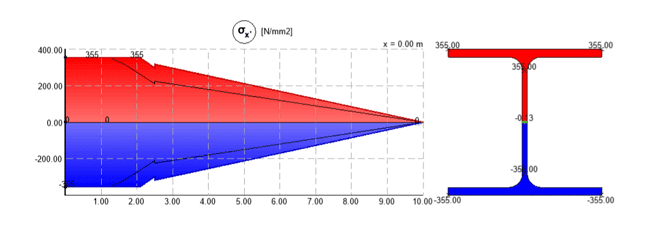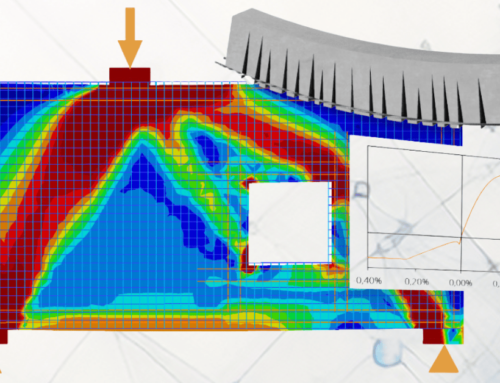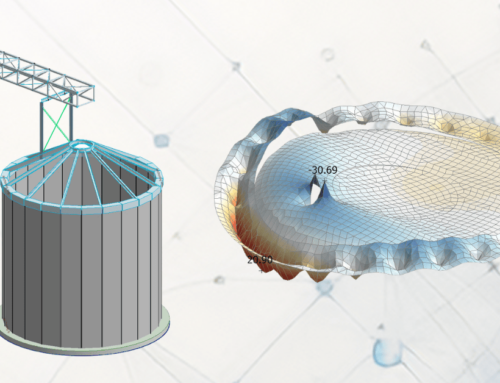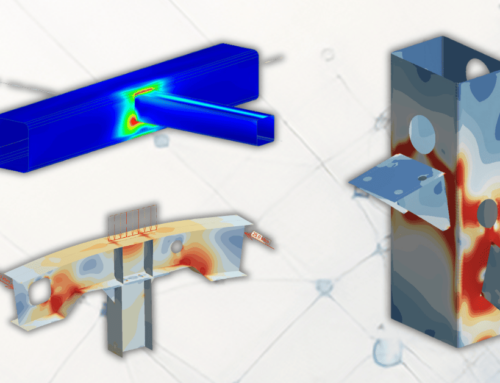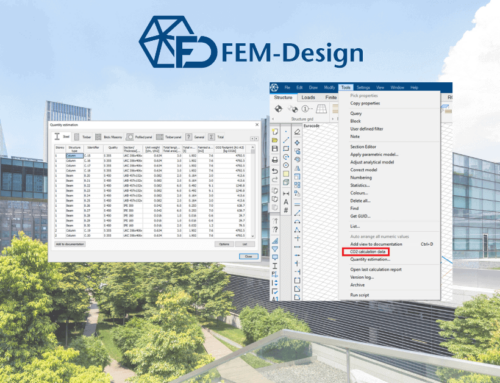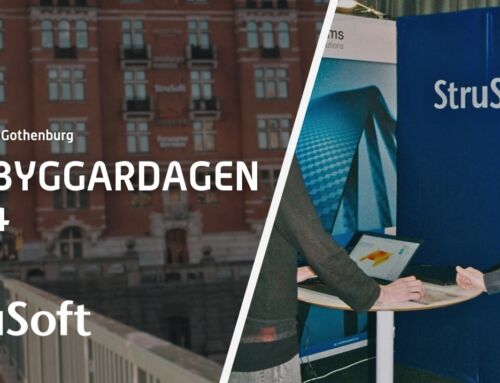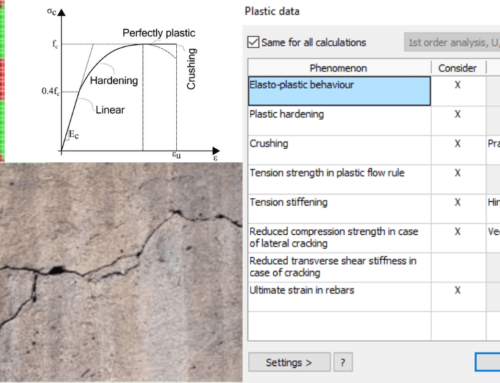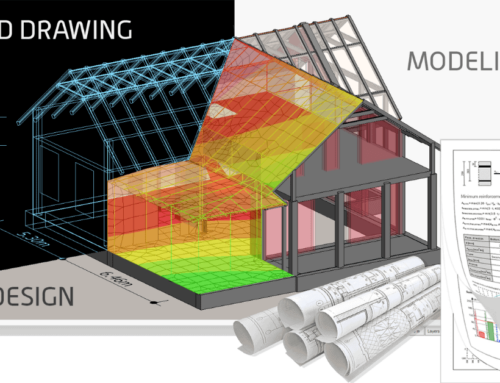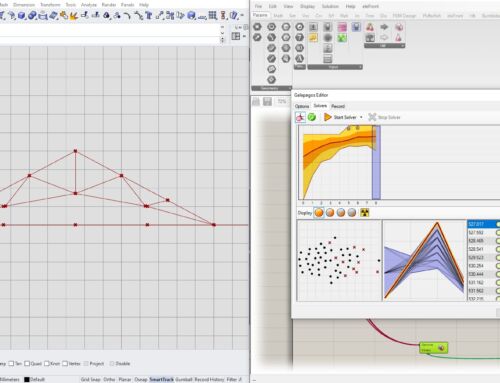The release of FEM-Design v21 is just around the corner and a big new feature is the ability to consider Plastic Hinges in the Steel Design Module.
With this tool, a plastic distribution of the stress across the cross section can be obtained and plastic mechanisms in the structure will appear. This will also potentially affect the load distribution and provide a more realistic behaviour.
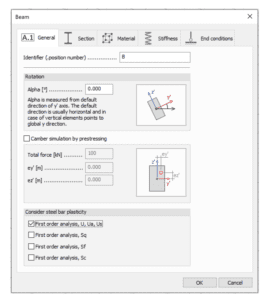
This type of calculation uses a more advanced stiffness matrix for the Timoshenko beam theory, which includes a coupling part between the curvature and the axial strain. Due to this, a more nuanced behaviour can be obtained, for single symmetrical profiles for example. If plasticity occurs in the cross section, the neutral axis can potentially move and consequently an axial load can cause a curvature of the beam.
How does this function work practically in the program?
You must first start by choosing whether or not you want to take plasticity into account. This can be done under the “General” tab at object level. Here the User can define whether they want to take plasticity into account and in any specific load combination. Then the analysis can be run with the “PL” setting selected under the settings for the load combinations (setup by load combinations). An iterative process can now be performed in which a plastic distribution of the stress across the cross section will be allowed.
If the force cannot be redistributed to other parts of the structure, the calculation will stop and present the result of the last converged load step. FEM-Design also shows the first unstable position. With the help of these results, the Designer gets a very good understanding of the mechanism and how it can potentially be avoided.
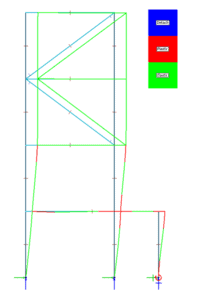
Under “Detailed results” for the stresses in the beam, you can see how the plastic distribution looks across the cross section.
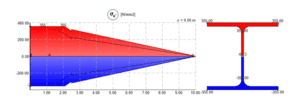
The program uses an idealised elasto-plastic material model, where the limit for plasticity is set to fy (e.g. fy = 355 for S355). Due to this, a smaller elastic part is obtained in the profile, as the curvature is not infinite. This can also be seen in the picture above, in the middle of the profile, where the tension in the cross section is less than 355 MPa.
FEM-Design v21 was released at the end of January 2022 and it is the version with the most new features that we have released so far!
The release new will be rolled out in the near future and in the meantime please feel free to take the opportunity to book a live demo of the new version. Just get in touch with one of our Customer Coaches and we will be happy to help you with this.
You can read more about Plastic Hinges in Steel Design and the Timoshenko beam theory on the FEM-Design Wiki by clicking here.
